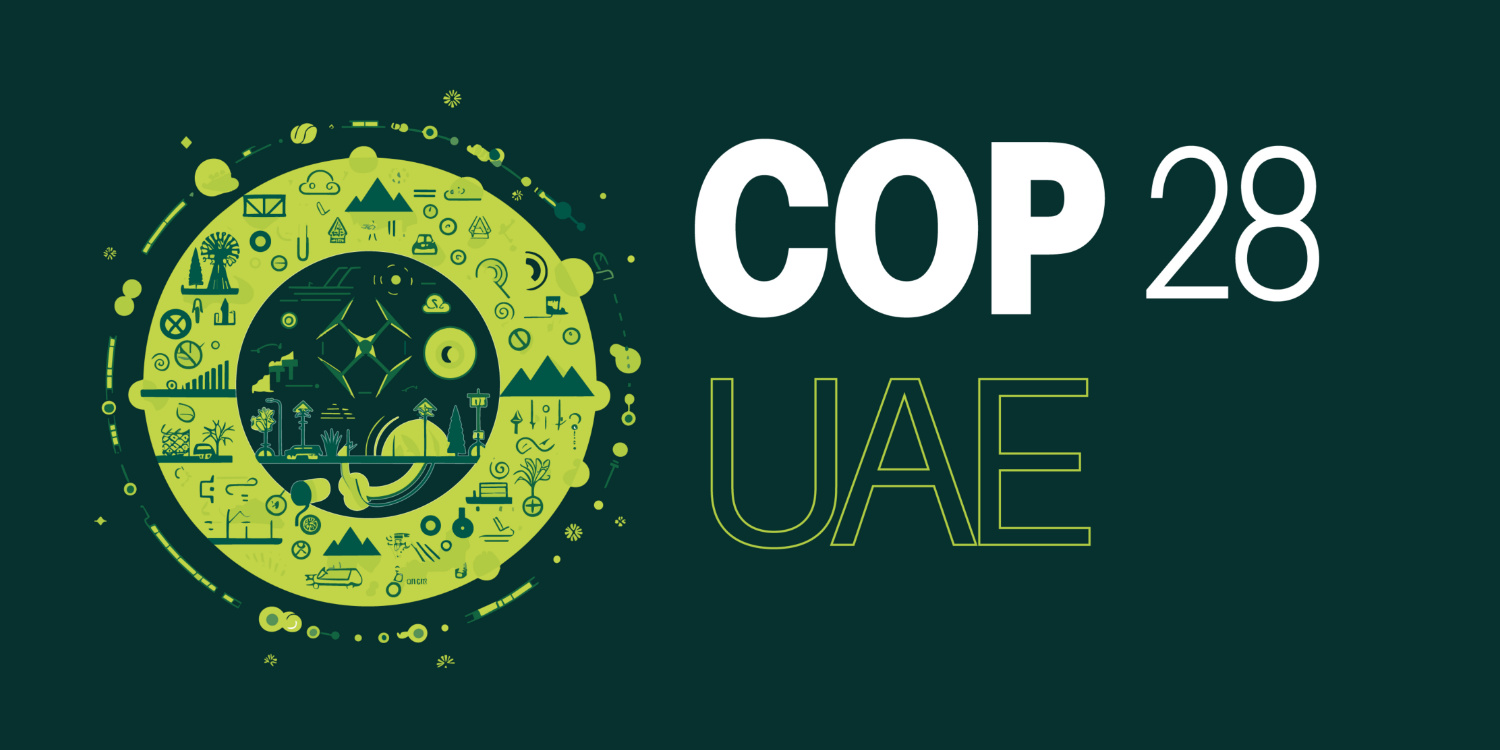It’s that time of year again, when we can expect the news to be filled with stories about climate change and the great and urgent need to address climate change. Why? Because late November means COP time, the annual meeting of nation’s representatives who are signatories to international climate agreements. This year COP is held in Dubai and is likely to be attended by about 20-30,000 people. This will be the 28th such meeting, so it is called COP28 (https://www.cop28.com/).
But what is COP and what role does it play in climate action, and what roles can the rest of us play?
COP is a crucial international moment in Climate action, but what it is (and what it is not) is not always well understood. We also face the challenge that global emissions are going up, not down, despite progress in reducing emissions in some areas. COP can also become a bit distracting or disempowering. Paradoxically, COP can distract from the action that we can all take in our own sphere of influence. Indeed, there are many ways that the museum sector can take more ambitious climate action that aren’t currently powerfully factored into museum thinking. This article will explore these four points in turn.
Reducing emissions is only half of the battle: we need to shift our working practices and lifestyles to cope with current and future climate impacts. This is what is called climate adaptation.
What is COP?
As a short background, countries signed up to an international agreement called the UN Framework Convention on Climate Change, which was agreed at the Rio Earth Summit in 1992 (https://unfccc.int/). This is one of the three Rio Conventions; the others relate to biodiversity, and preventing the spread of deserts and soil erosion. Since it was developed, signatory countries (called Parties) have met annually at political summits called the COP (Conference of the Parties) to monitor progress, develop programmes of action, and to debate points of contention. There are actually COPs (or similar meetings called MOPs) for each international agreement, but the climate one gets a lot of attention, while the others get little or no press interest (COP15 for the Convention on Biological Diversity was in 2022).
So, what is COP? COP is the short name for the Conference of the Parties to the United Nations Climate Change Convention. It typically takes two weeks and cycles around the five UN regions (Western Europe, Eastern Europe, Asia-Pacific, Africa and Americas). There are COPs for other Conventions (e.g. the Convention on Biological Diversity), but they don’t attract media attention like the climate COP does. COP has grown to be a massive event, with upwards of 20,000 people attending, and alongside the political negotiating teams, there are a lot of NGOs, representatives of particular groups of people, and also a huge trade fair spread across about 150 pavilions. COP is not a conference in the way people often think it is: it is a political summit, with a huge trade fair and side events in the ‘official’ part, where countries and NGOs (but not usually businesses) have pavilions that can take up to about 150 people. Access to COP is very difficult to gain: you need to gain accreditation to get you a ‘badge’, which is your ticket to access the building (it has airport-type security). Even when you are in, there are different levels of access. Parties have the greatest access, to all events. NGOs and other organisations have a different status. They are called Observers, and have no say or role in the formal negotiations at all. The mandated side events are more important and formal than they sound, and explore particular topics, and Observers can take part in them openly when they are in workshop-style set-ups. Those with pavilions organize their own programmes, and these often involve Observers. COP has an official public-facing aspect called the Green Zone, which is usually in an exhibition centre (in 2021 it was at Glasgow Science Centre). Many other events take place outside of COP, which have no official relationship with COP itself. Many other events also take place online at the time of COP. It is worth saying a surprisingly large amount of COP is available without having to travel there, as the main events are shown on the United Nations Framework Convention on Climate Change (UNFCCC) livestream, and many other events are livestreamed too.
Exploring creative opportunities to address the difficult challenge [of visitor travel] will be important for comprehensive action.
Global emissions are going up, and so are climate impacts
To turn to the second challenge, in spite of 28 years of meetings of COPs, it is important to stress that greenhouse gas emissions are going up, not down. Information on emissions can be easily found in the UN Environment Programme (UNEP) ’s annual Emissions Gap report, issued every year just ahead of COP.[1] The last report, from October 2023, noted that we are on track for a world well beyond 2 degrees of warming compared to pre-industrial times (in reality 1880-1900, as that is when emissions measurements are usually calculated from). Reducing emissions is only half of the battle: we need to shift our working practices and lifestyles to cope with current and future climate impacts. This is what is called climate adaptation, and it can mean ‘hard’ or technical solutions (like changing buildings and equipment), and ‘soft’ or social solutions, such as education and awareness-raising. UNEP produce another report, on progress with climate adaptation, but it also shows that adaptation is very insufficient.[2]
Mobilising Museums for Climate Action
While climate action is growing as a topic in museums, many museums continue to use significant levels of resources, as energy, notably through visitor travel, and the waste produced from exhibitions and other activities. Reducing energy impacts and shifting to renewable energy sources is great, but museums that have a comprehensive approach for climate action also look at the wider impacts of their activities. These are called their Scope 3 emissions, which are the emissions involved in creating the things they use, and that are generated as a result of their activities. Visitor travel is a huge nut to crack here: most people have to travel to visit museums, but the emissions from visitor travel is part of a museum’s Scope 3 footprint (in the ‘downstream transportation’ category). Emissions from visitor travel can be a large contributor to a museum’s overall carbon footprint, but museums have relatively limited control over how people travel to visit them. Exploring creative opportunities to address this difficult challenge will be important for comprehensive action.
Back in 2021, a team of us ran the project Reimagining Museums for Climate Action (see article Mobilising Museums For Climate Action). This resulted in an exhibition at COP26, and produced a number of resources for the museum sector. One of these resources is the Mobilising Museums for Climate Action toolbox, a PDF aiming to inspire radical climate action in and with museums. This work highlighted five main ways for museums to take climate action: reducing their own emissions, supporting others (visitors and suppliers) to reduce theirs, adapting to climate change, supporting others to adapt to climate change through education, and lastly to make sure all this promotes wider climate justice and sustainable development (as there are many ways to act on climate change that are not so fair).
There is large scope for the museum sector to embed this programme much more significantly into its work. That would be good for people, climate action, and for museums too, as it would help unlock their potential for climate action.
Climate considerations into museum policies and practices
The original UNFCCC (1992) and Paris Agreement (2015) both contain specific sections on the importance of public education, training staff, public awareness, access to information, public participation, and international co-operation on climate change matters. This work is referred to as Action or Climate Empowerment (ACE for short). This is an area of work that museums are very well placed to support, and there is large scope for the museum sector to embed this programme much more significantly into its work. That would be good for people, climate action, and for museums too, as it would help unlock their potential for climate action.
At COP26, a new programme to support ACE was adopted, called the Glasgow Work Programme, which reinforces these initial frameworks, and it runs from 2021-31. This is an excellent framework, which identifies four key priorities that are needed to advance ACE. Firstly, we need coherent policies that require organisations to do the right thing, in that they contribute to climate action and not climate destruction. Second, we need co-ordinated action across sectors and across society. Third, we need tools and support in sectors to make them more effective. Fourth, we need effective monitoring, evaluation and communication of climate actions. This set of priorities can be applied to the museum sector, or indeed to individual institutions and organisations.[1]
Climate action – with a strong public mandate – is not built at the time of COP, it is built up in the other 50 weeks of the year. Let’s use them, and unlock the potential of museums and exhibitions to accelerate climate solutions, and reduce our negative impacts too. Let’s foster a more comprehensive approach about the impacts of exhibition-making and touring, and work to maximise positive benefits and reduce the negative impacts in a way consistent with climate action and the Paris Agreement. If our emissions are going up, or we are simply justifying museums’ emissions on the idea that they empower other people to reduce their emissions, or we are simply seeking to grow the size of our museums and exhibitions without evaluating the climate impacts, we are not doing enough, and are headed in the wrong direction. Transformational change means transformational change, let’s make use of the Glasgow Work Programme, and reduce our emissions and adapt to climate change too. Why wouldn’t we?



